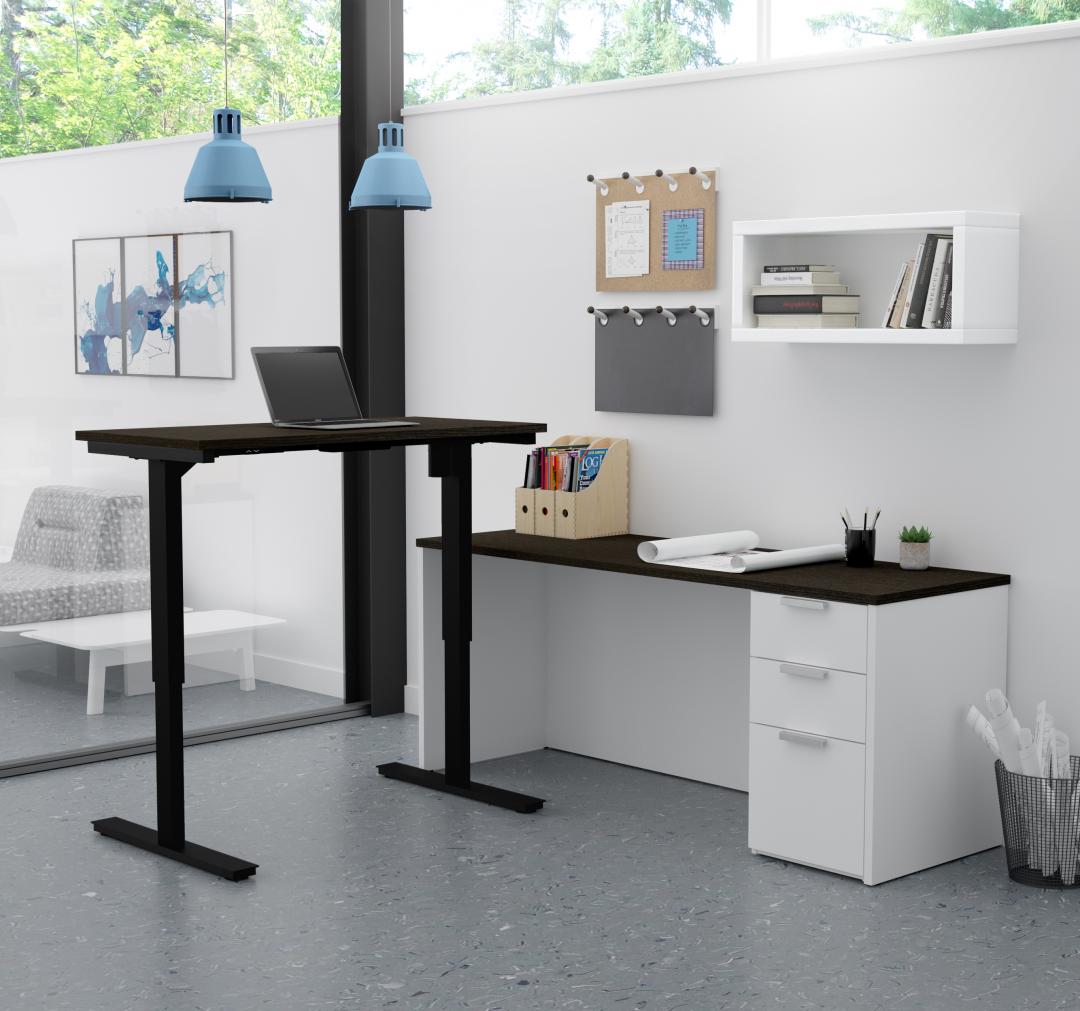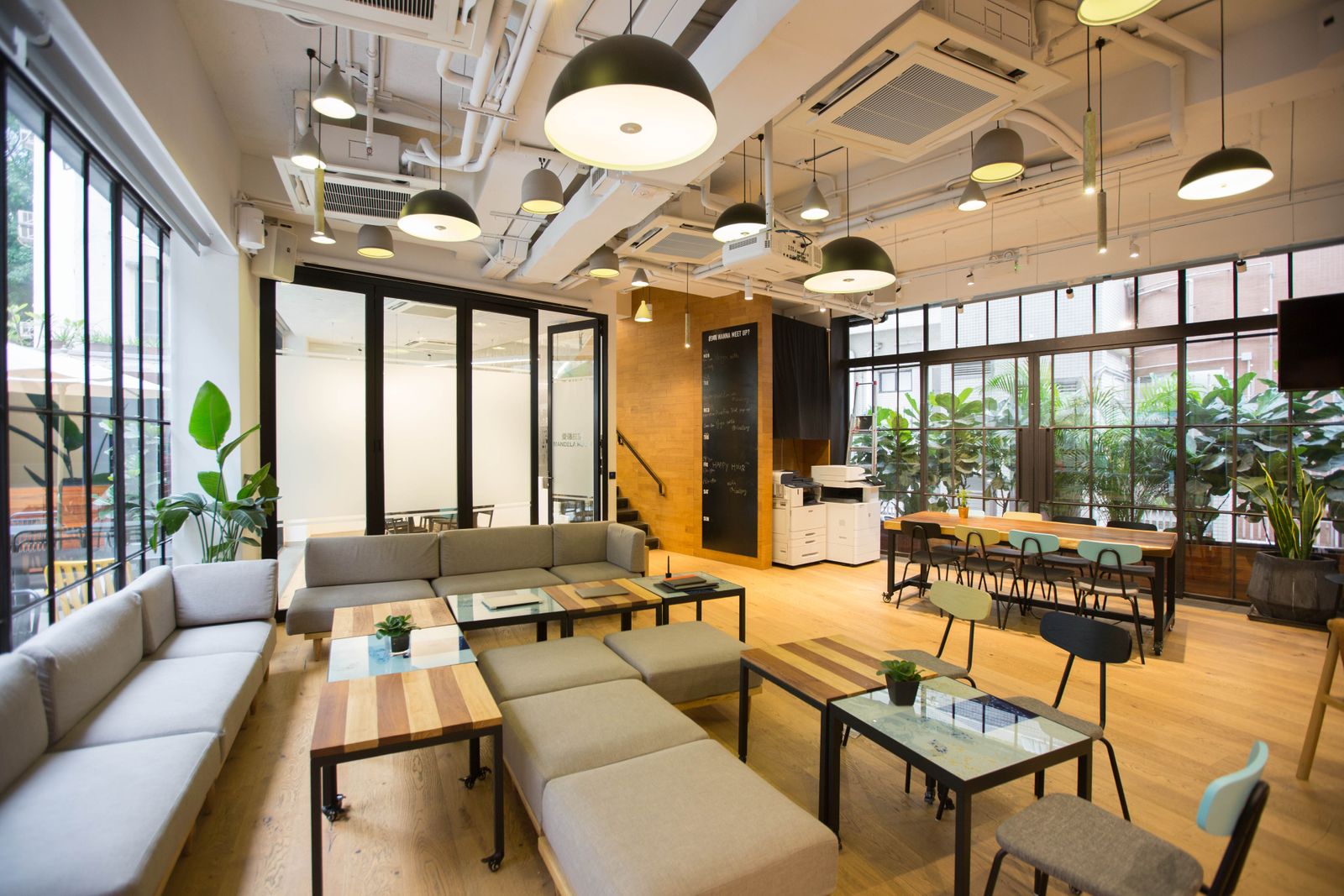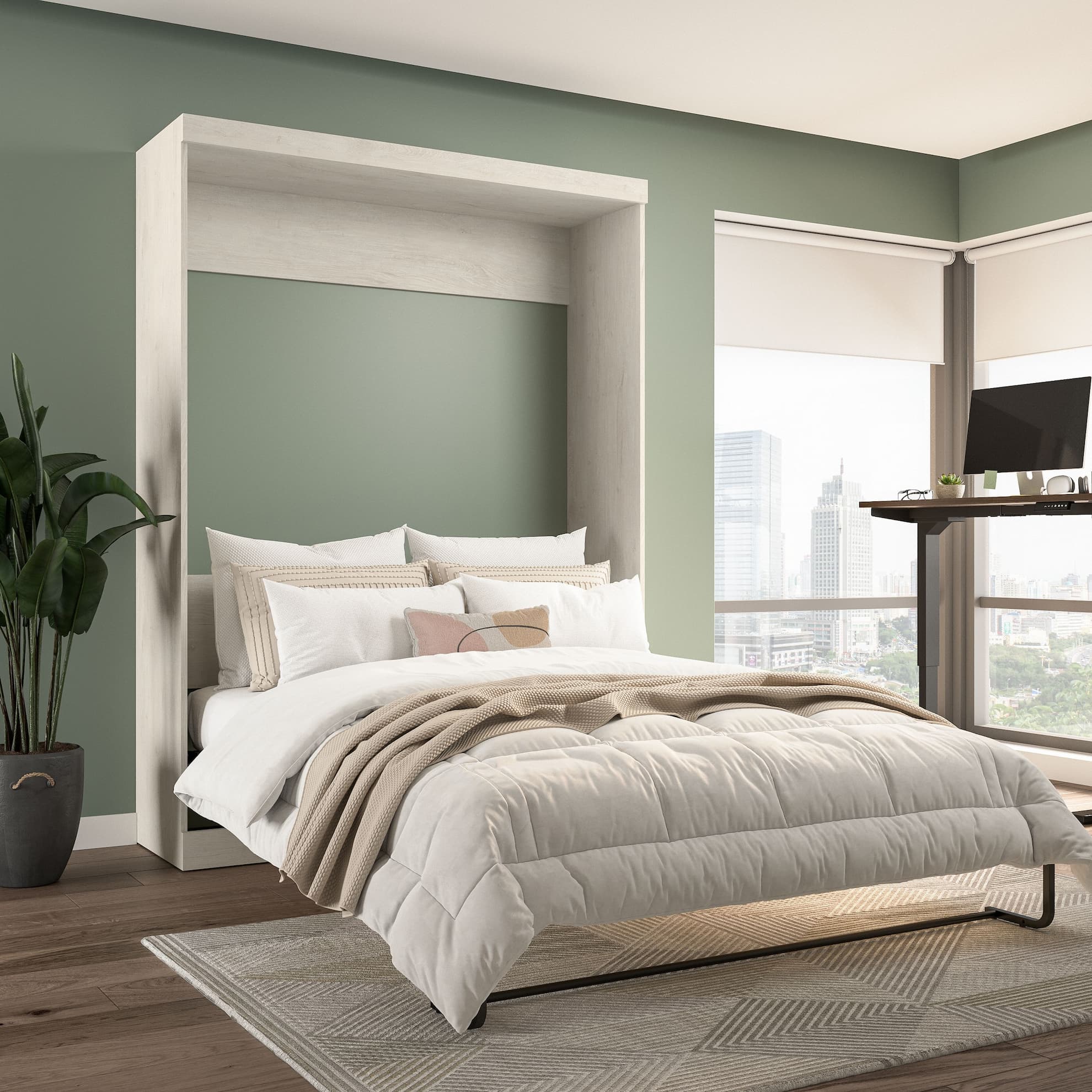Adapt employees’ workstations to maximize their comfort and you’ll maximize their workplace satisfaction and productivity as well.
As an employer, creating a healthy and safe work environment where your workforce can flourish – content, comfortable, and productive – should be a top priority.
When you invest in workplace comfort, you create and sustain a business where employees suffer fewer injuries and far less time away due to illness. As a result, your team will enjoy greater overall contentment at work and will be more productive.
Better ergonomics in the workplace benefit everyone and, perhaps surprisingly, help reduce the risk of temporary conditions becoming lasting disabilities.
More and more employees use a computer for work. And, while we may not generally consider desk workers to be at great risk of job-related injury, sitting in one position, conducting repetitive physical tasks day in and day out, can, in fact, cause irreparable harm.
It’s important to keep in mind that, when it comes to planning your workspace, one size does not fit all. For instance, in an average office, 15% are unable to read a 10-point font without suffering eye strain; 10% of individuals are left-handed; 10% of workers have dyslexia; and a whopping 20% of your employees will acquire some form of work-related disability, temporary or permanent, during their working life.
Workstation ergonomic issues as simple as unsuitable or inadequately adjusted chairs and improperly positioned monitors and keyboards can cause physical symptoms such as aching or burning limbs, painful spine and back muscles, as well as numbness.
There are ways, fortunately, of improving your workspace ergonomics to take into consideration the various needs of your employees to promote health, comfort, and productivity. They don’t have to be expensive alterations, either.
A healthy office is a productive office and even simple improvements can mean the difference between healthy and comfortable versus suffering in pain.
Adjustable Furnishings
Probably the quickest fix when it comes to achieving more comfortable workstation ergonomics is to provide adjustable chairs and desks.
For desk work, it’s important that the furniture promotes good posture and a neutral body position. Purchase high-quality, adjustable, chairs and desks – the more adjustments available, the better. Individuality matters and the more positions a piece of furniture offers, the more easily it will be customized to the person using it.
A desk that adapts from sitting to standing according to the users’ needs is ideal, allowing the worker to change position throughout the day.
After the desk, an ergonomic chair is the most important piece of office furniture in your workplace, particularly for employees who spend the majority of their day seated. When choosing a high-quality office chair, look for:
- seat depth – allow for three- to four-fingers’ width between the user’s legs and the edge of the seat.
- chair height – should be able to adjust the height to suit the user
- lumbar support – best if it’s adjustable for position and firmness. The curve of the chair’s back should support the lower spine, following the natural curve of the user’s lower back
- arm rests – so arms are held parallel to the floor and shoulders aren’t hunched
- ability to recline – a chair that can recline to about 135 degrees may be better for the spine than sitting up straight at an angle of 90 degrees
- material – more about personal preference though mesh allows for better air circulation. Look for durable materials.
The more flexibility the chair has, the more likely the chair will be a better fit for the user, protecting them against discomfort and potential injury.
Desk Organization
Desk organization tends to be a very personal affair. Everyone has their own workflow and workspace preferences. Some prefer clutter-free minimalism, others are at their creative and productive best surrounded by piles of documents, office supplies, and knickknacks.
Regardless of the environment you or your employees prefer, a desk organization system contributes to the ergonomic quality of the workspace.
Ease of movement is essential for promoting comfort during the workday. Keep only the items used daily within easy reach. Keep work surfaces clear of cables and cords with ties. Ensure you can easily reach the tools of your trade – printer, electronics, etc. Everything else should be stored off the desk. Incorporate filing cabinets, hutches, and other storage solutions to keep things close yet out of the way.
A work surface should be customized and specific to the user. If performance and productivity are to be enhanced, the workspace should support comfort and well-being.
Monitor Placement
Key to worker comfort and well-being is placement of the monitor. A poorly placed monitor can lead to improper posture, hunched shoulders, eye strain, and more.
To help ensure proper placement, there are guidelines to ensure workers increase their chances of remaining healthy as they work on the computer. A few tips:
- Monitor or laptop screen should be 20 to 40 inches away from the user’s face. Too far and the worker may have to lean uncomfortably forward compromising posture and back support. Too close and eyes have to work harder to maintain focus.
- Top line of the screen should be kept at or just below eye level to avoid head, neck, or back strain.
- Do not tilt the monitor greater than 10 to 20 degrees or readability is compromised.
- Place the monitor perpendicular to any windows to help avoid eye-straining glare.
Quality Lighting
The importance of good lighting can’t be overstated. The quality of office lighting has the power to affect mood and well-being, not to mention comfort and work performance. Poor or inadequate lighting – whether it’s the harshness of overhead fluorescents or too much dimness – can contribute to stress, irritability, fatigue, eye strain, and work disruption.
The best lighting available is natural light.
Since 1979, researchers have advised that natural light and, ideally, natural views can reduce stress, minimize anxiety, enhance mood and morale, and help improve concentration.
A 2014 study found that employees who enjoyed more exposure to natural window light at the office slept longer and more soundly during the night. They were also inclined to get more physical activity than their counterparts in offices without windows.
Natural daylight and sunshine help us maintain our internal circadian rhythm or ‘clock’ which therefore affects our level of energy and quality of sleep as well as the release of the hormone serotonin, which helps with a sense of calm and focus.
Without the option of window light, however, there are desk lamps that simulate daylight and are recommended additions to help with morale and a sense of well-being.
Consider the strength of the light, size, ease of adjustability, and position of the on/off switch. Whenever possible, choose LED bulbs which use 75 percent less energy than incandescent.
The position of office light sources is also very important. You should provide ample uniform lighting – without causing glare on computer monitors – that allows employees to perform their work without squinting or straining to see.
Be sure to arrange desks so that workers are seated perpendicular to any window light and that any task lamps on desks are positioned so the base of the lampshade is at around the same height as the user’s chin.
You can also paint office walls lighter colours to help reflect light, whether it be natural or artificial.
Incorporate Colour Psychology
The psychology of colour is a fascinating science. Consider how well-known brands use colour to influence their customers: Starbucks incorporates green to promote relaxation and ease; conversely, fast-food giant, McDonald’s uses bold, high-energy yellow and red to stimulate our appetites.
Think about how your office colours might be influencing you and your employees. For example:
- Blue stimulates thought, concentration, and communication. It can also seem cold and impersonal.
- Red is warm and energizing; it’s stimulating but can also convey aggression.
- Green tends to be a reassuring colour, inspiring balance. Depending on the shade, however, it can seem institutional.
- Yellow is uplifting and stimulating, but depending on the shade you choose, could inspire anxiety.
- Likewise, orange is stimulating but also conveys a sense of fun.
- Violet encourages introspection and contemplation.
- Pink can be a soothing colour.
- Gray is typically considered neutral, but can actually be rather depressing depending on the tone or shade.
- Brown tends towards the serious. It can be cozy and warm as well as supportive.
- White can be stark, but it can also be clean and modern.
- Black, too, can be forward-thinking and sophisticated – also serious – but if overused can be heavy and very dark.
Sound vs. Noise
There are a variety of sounds and noises that inhabit an office. Some are good – soothing and peaceful – to hear and others are decidedly not. Often, what we hear in the office environment constitutes noise and distraction.
Conversations, the clicks of keyboards, the heels of shoes on bare floors – it can be impossible to drown out all the office hubbub when you’re trying to focus and get work done.
Consider providing sets of noise-canceling headphones to your open workspace employees. Play soft, soothing background sounds throughout the office from a noise canceling machine as research suggests that certain ambient noise can actually increase creativity.
Add Greenery
No matter the space, bringing nature indoors is always a good idea.
Adding a plant or three into the office space is remarkably helpful for enhancing contentment and productivity. In fact, scientists have learned that indoor plants prevent fatigue during attention-intensive tasks.
Providing an outdoor view of nature or introducing several plants into the workspace decor may be restorative. Without a plant in sight, it’s quite possible employees could be losing productivity.
Concerned that indoor plants are too high-maintenance? Aloe, cacti and other succulents take very little care, but if you are blessed with a green thumb, just about any plant will improve your office space and the spirits of your employees.














Question or Comments